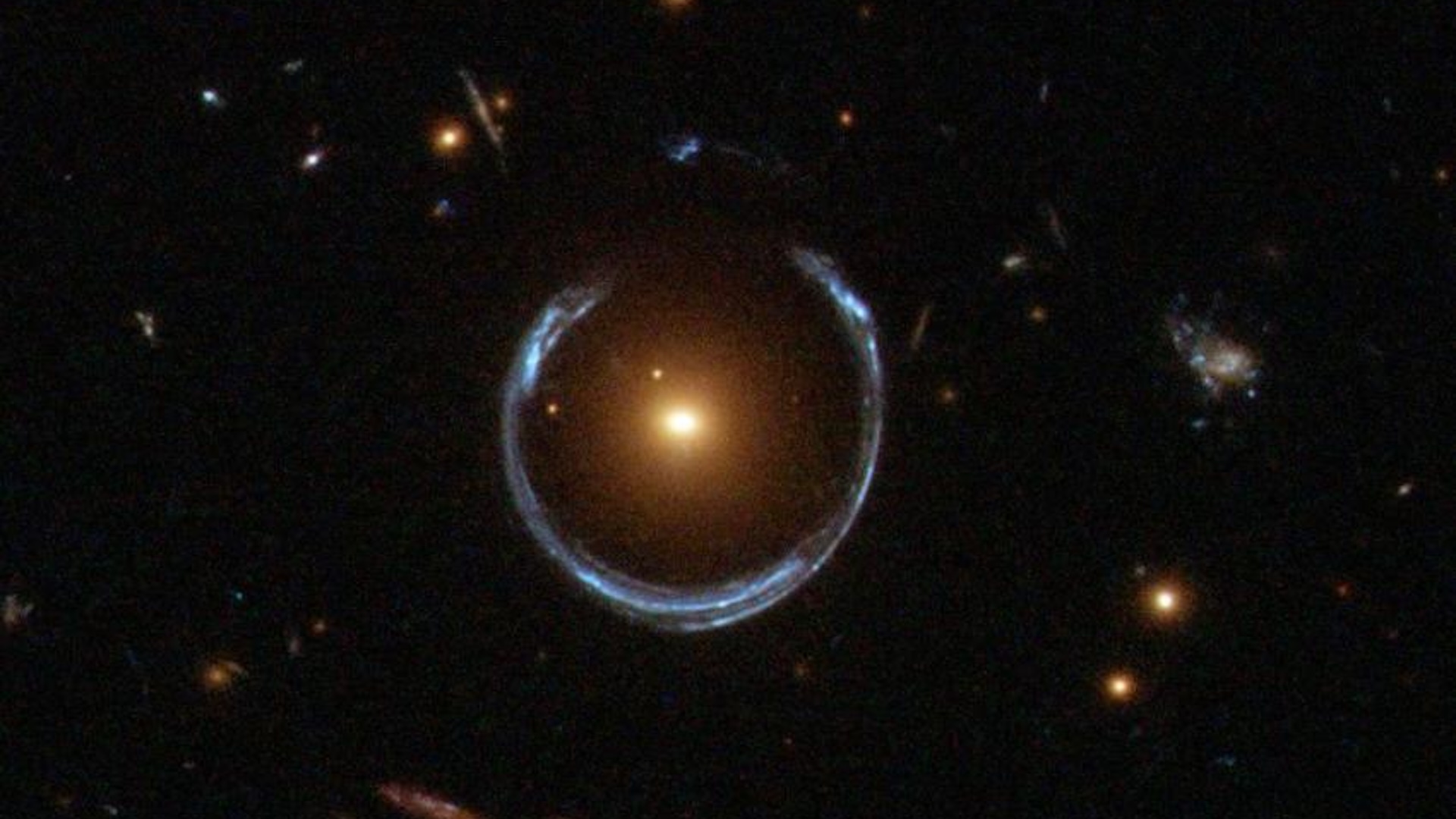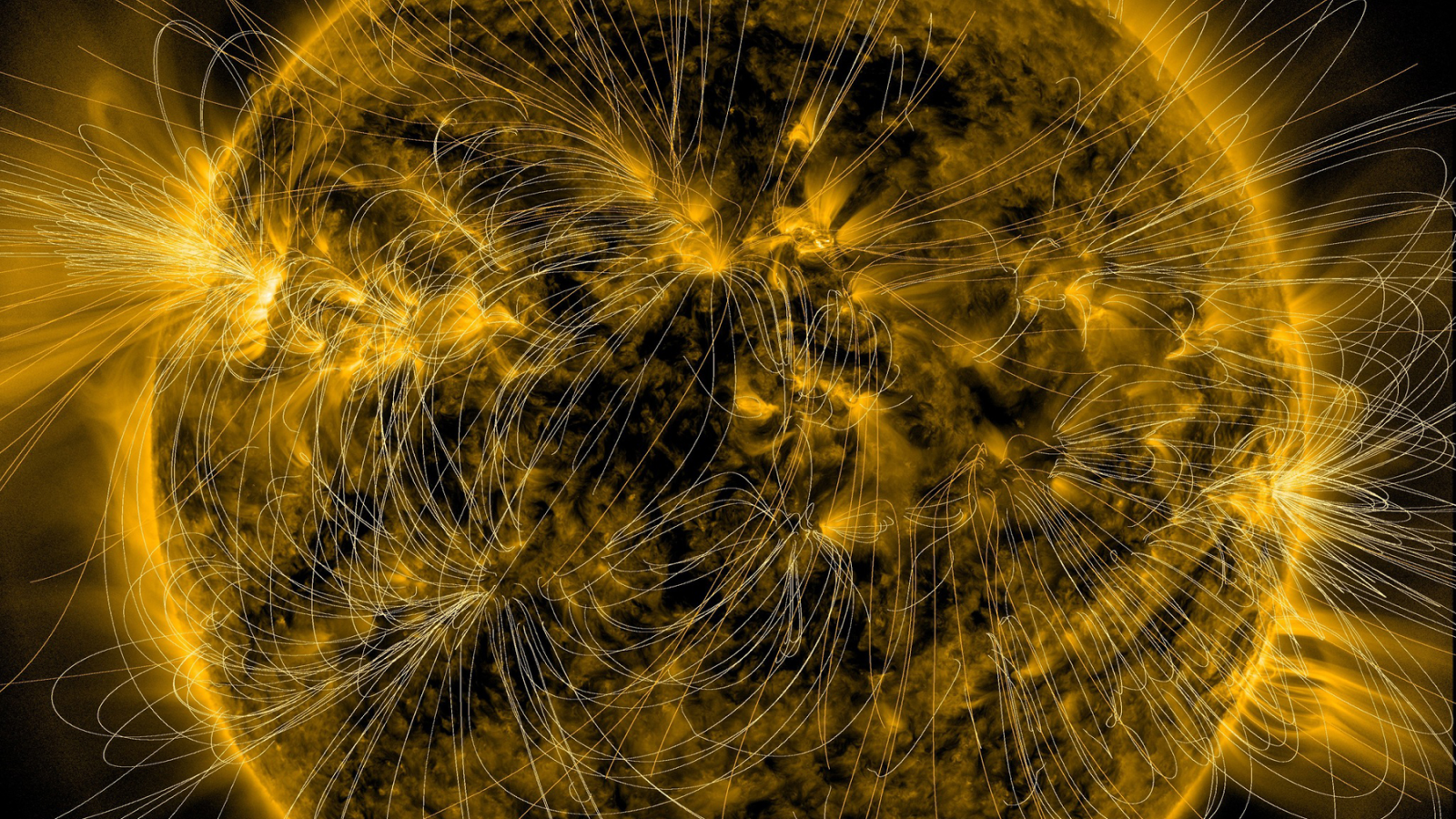Colossal black hole 36 billion times the mass of our sun is one of the largest ever seen in the universe
We know little about how young galaxies and their black holes grew up.

The massive "Cosmic Horseshoe" galaxy system likely hosts a colossal black hole measuring 36 billion times the mass of our sun — one of the largest ever seen in the universe, a new study finds.
Scientists found the cosmic monster by peering through a halo of light called an "Einstein ring," which is a kind of gravitational lens. Lensing happens when a massive foreground object, such as a galaxy cluster or a black hole, warps space-time, magnifying the light of more distant objects behind.
The ultramassive black hole finding was described Aug. 7 in the journal Monthly Notices of the Royal Astronomical Society.
When it comes to measuring young and large black holes, the field is full of uncertainty. We can't directly see black holes (they are visible through their effect on radiation, or nearby objects) so instead scientists use models to gauge their size. But because the young ones are so far away from us, and every model has an "error bar," size estimations can't be considered completely accurate.
"It's one of the biggest, but not the very biggest," Thomas Connor, an astrophysicist at the Center for Astrophysics, Harvard and Smithsonian who was not involved in the research, told Live Science. Connor added that the new paper shows at least one other black hole possibly surpassing the one in the Horseshoe galaxy.
As for what is likely the biggest black hole we know about, a study in The Astrophysical Journal in 2019 suggested TON 618 is the supreme-sized singularity, weighing in at roughly 40 billion solar masses.
To astronomers, however, it is not only the size of the black hole that is interesting. More broadly, big black holes in young galaxies highlight how little we know about the early universe.
Get the world’s most fascinating discoveries delivered straight to your inbox.
Most massive galaxies are thought to host supermassive black holes. It's possible that galaxies and black holes therefore co-evolve, the authors of the new study wrote. However, it's not clear if the evolution remains coupled among host galaxies and "ultramassive black holes."
Increasingly, observatories like the James Webb Space Telescope (JWST) are spotting ultramassive black holes in the very early universe — raising big questions about how such monstrous objects could form in so little time.
Connor said there aren't any easy answers to that question yet.
He likened the size of the Cosmic Horseshoe's black hole — and those like it — to finding a toddler-aged LeBron James at a daycare full of children. Figuring out how the galaxies got that big that quickly is "theoretically and computationally, incredibly challenging," Connor added.
It could be that galaxies and their black holes go through a more extensive growth spurt than expected during their earlier days, gobbling up most of the material available and then remaining quiescent for billions of years. But this idea still challenges "fundamental limitations about how quickly things can grow," Connor said.
Connor said this paradox of massive black holes in a young universe is forcing astronomers to look at the environments in which they grew, to learn more about evolution. Dark matter may play a role that is not clearly understood, for example.
This latest black hole find at the Cosmic Horseshoe was possible partly by chance, involving stellar motions paired with gravitational lensing, Connor said. The issue is there are likely other massive galaxies out there with supermassive black holes that we cannot easily see, as lensing is not always available to astronomers.
"Are there massive galaxies out there that we would need to find a way to measure their black holes in a comparable manner?" he said.
Black hole quiz: How supermassive is your knowledge of the universe?

Elizabeth Howell was staff reporter at Space.com between 2022 and 2024 and a regular contributor to Live Science and Space.com between 2012 and 2022. Elizabeth's reporting includes multiple exclusives with the White House, speaking several times with the International Space Station, witnessing five human spaceflight launches on two continents, flying parabolic, working inside a spacesuit, and participating in a simulated Mars mission. Her latest book, "Why Am I Taller?" (ECW Press, 2022) is co-written with astronaut Dave Williams.
You must confirm your public display name before commenting
Please logout and then login again, you will then be prompted to enter your display name.


